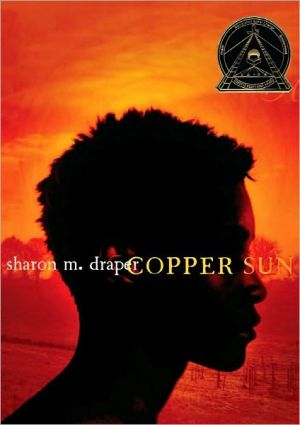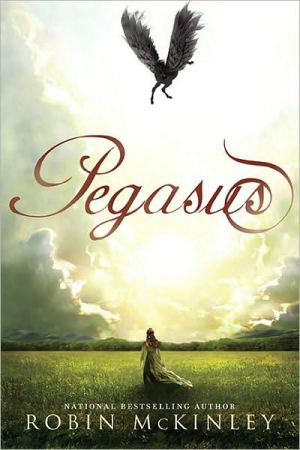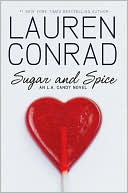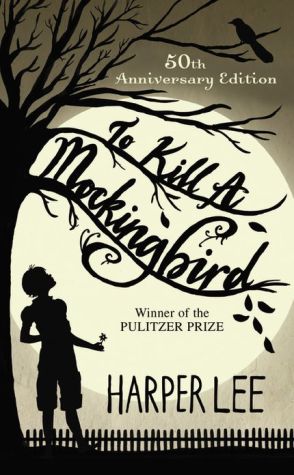Copper Sun
Copper Sun is the epic story of a young girl torn from her African village, sold into slavery, and stripped of everything she has ever known—except hope.\ \ \ Winner of the 2007 Coretta Scott King Author Award\
Search in google:
When pale strangers enter fifteen-year-old Amari's village, her entire tribe welcomes them; for in her remote part of Africa, visitors are always a cause for celebration. But these strangers are not here to celebrate. They are here to capture the strongest, healthiest villagers and to murder the rest. They are slave traders. And in the time it takes a gun to fire, Amari's life as she's known it is destroyed, along with her family and village.Beaten, branded, and dragged onto a slave ship, Amari is forced to witness horrors worse than any nightmare and endure humiliations she had never thought possible -- including being sold to a plantation owner in the Carolinas who gives her to his sixteen-year-old son, Clay, as his birthday present.Now, survival and escape are all Amari dreams about. As she struggles to hold on to her memories in the face of backbreaking plantation work and daily degradation at the hands of Clay, she finds friendship in unexpected places. Polly, an outspoken indentured white girl, proves not to be as hateful as she'd first seemed upon Amari's arrival, and the plantation owner's wife, despite her trappings of luxury and demons of her own, is kind to Amari. But these small comforts can't relieve Amari's feelings of hopelessness and despair, and when an opportunity to escape presents itself, Amari and Polly decide to work together to find the thing they both want most...freedom.Grand and sweeping in scope, detailed and penetrating in its look at the complicated interrelationships of those who live together on a plantation, Copper Sun is an unflinching and unforgettable look at the African slave trade and slavery in America.Publishers WeeklyDraper's (Forged by Fire) historical novel takes on an epic sweep as it chronicles the story of 15-year-old Amari, kidnapped from her African village in 1738 and sold into sexual slavery in South Carolina. The horrors of the kidnapping-Amari's parents and little brother are murdered before her eyes-and the Atlantic crossing unwind in exhaustive detail, but the material seems familiar. The story doesn't really take off until Amari reaches her new "home," a rice plantation run by a Snidely Whiplash clone, who presents her to his evil-to-the-core son as a birthday gift. Befriended by the wise cook, a white indentured girl named Polly and the beleaguered mistress of the household, Amari eventually and improbably finds a way to escape. Draper has obviously done her homework, but the narrative wears its research heavily. Every bad thing that befell an African slave either happens to or is witnessed by Amari (e.g., Africans eaten by sharks, children used as live alligator bait, an infant shot dead out of spite). Rape is constant. These lurid elements may appeal to reluctant readers who would normally shy away from historical fiction, but they unfortunately push the story to the brink of melodrama. The author also pulls her punches with a highly implausible happy ending. But after all that Amari has gone through, readers will likely find the conclusion a huge relief. Ages 14-up. (Jan.) Copyright 2006 Reed Business Information.
Copper Sun\ \ By Sharon M. Draper \ Atheneum\ Copyright © 2006 Sharon M. Draper\ All right reserved. \ ISBN: 0689821816 \ \ \ Chapter One: Amari and Besa\ "What are you doing up there, Kwasi?" Amari asked her eight-year-old brother with a laugh. He had his legs wrapped around the trunk of the top of a coconut tree.\ "For once I want to look a giraffe in the eye!" he shouted. "I wish to ask her what she has seen in her travels."\ "What kind of warrior speaks to giraffes?" Amari teased. She loved listening to her brother's tales -- everything was an adventure to him.\ "A wise one," he replied mysteriously, "one who can see who is coming down the path to our village."\ "Well, you look like a little monkey. Since you're up there, grab a coconut for Mother, but come down before you hurt yourself."\ Kwasi scrambled down and tossed the coconut at his sister.\ "You should thank me, Amari, for my treetop adventure!" He grinned mischievously.\ "Why?" she asked.\ "I saw Besa walking through the forest, heading this way! I have seen how you tremble like a dove when he is near."\ "You are the one who will be trembling if you do not get that coconut to Mother right away! And take her a few papayas and a pineapple as well. It will please her, and we shall have a delicious treat tonight." Amari could still smell the sweetness of the pineapple her mother had cut from its rough skin and sliced for the breakfast meal that morning.\ Kwasi snatched back the coconut and ran off then, laughing and making kissing noises as he chanted, "Besa my love, Besa my love, Besa my love!" Amari pretended to chase him, but as soon as he was out of sight, she reached down into the small stream that flowed near Kwasi's tree and splashed water on her face.\ Her village, Ziavi, lay just beyond the red dirt path down which Kwasi had disappeared. She headed there, walking leisurely, with just the slightest awareness of a certain new roundness to her hips and smoothness to her gait as she waited for Besa to catch up with her.\ Amari loved the rusty brown dirt of Ziavi. The path, hard-packed from thousands of bare feet that had trod on it for decades, was flanked on both sides by fat, fruit-laden mango trees, the sweet smell of which always seemed to welcome her home. Ahead she could see the thatched roofs of the homes of her people, smoky cooking fires, and a chicken or two, scratching in the dirt.\ She chuckled as she watched Tirza, a young woman about her own age, chasing one of her family's goats once again. That goat hated to be milked and always found a way to run off right at milking time. Tirza's mother had threatened several times to make stew of the hardheaded animal. Tirza waved at Amari, then dove after the goat, who had galloped into the undergrowth. Several of the old women, sitting in front of their huts soaking up sunshine, cackled with amusement.\ To the left and apart from the other shelters in the village stood the home of the chief elder. It was larger than most, made of sturdy wood and bamboo, with thick thatch made from palm leaves making up the roof. The chief elder's two wives chattered cheerfully together as they pounded cassava fufu for his evening meal. Amari called out to them as she passed and bowed with respect.\ She knew that she and her mother would soon be preparing the fufu for their own meal. She looked forward to the task -- they would take turns pounding the vegetable into a wooden bowl with a stick almost as tall as Amari. Most of the time they got into such a good rhythm that her mother started tapping her feet and doing little dance steps as they worked. That always made Amari laugh.\ Although Amari knew Besa was approaching, she pretended not to see him until he touched her shoulder. She turned quickly and, acting surprised, called out his name. "Besa!" Just seeing his face made her grin. He was much taller than she was, and she had to stand on tiptoe to look into his face. He had an odd little birthmark on his cheek -- right at the place where his face dimpled into a smile. She thought it looked a little like a pineapple, but it disappeared as he smiled widely at the sight of her. He took her small brown hands into his large ones, and she felt as delicate as one of the little birds that Kwasi liked to catch and release.\ "My lovely Amari," he greeted her. "How goes your day?" His deep voice made her tremble.\ "Better, now that you are here," she replied. Amari and Besa had been formally betrothed to each other last year. They would be allowed to marry in another year. For now they simply enjoyed the mystery and pleasure of stolen moments such as this.\ "I cannot stay and talk with you right now," Besa told her. "I have seen strangers in the forest, and I must tell the council of elders right away."\ Amari looked intently at his face and realized he was worried. "What tribe are they from?" she asked with concern.\ "I do not think the Creator made a tribe such as these creatures. They have skin the color of goat's milk." Besa frowned and ran to find the chief.\ As she watched Besa rush off, an uncomfortable feeling filled Amari. The sunny pleasantness of the afternoon had suddenly turned dark. She hurried home to tell her family what she had learned. Her mother and Esi, a recently married friend, sat on the ground, spinning cotton threads for yarn. Their fingers flew as they chatted together, the pale fibers stretching and uncurling into threads for what would become kente cloth. Amari loved her tribe's design of animal figures and bold shapes. Tomorrow the women would dye the yarn, and when it was ready, her father, a master weaver, would create the strips of treasured fabric on his loom. Amari never tired of watching the magical rhythm of movement and color. Amari's mother looked up at her daughter warmly.\ "You should be helping us make this yarn, my daughter," her mother chided gently.\ "I'm sorry, Mother, it's just that I'd so much rather weave like father. Spinning makes my fingertips hurt." Amari had often imagined new patterns for the cloth, and longed to join the men at the long looms, but girls were forbidden to do so.\ Her mother looked aghast. "Be content with woman's work, child. It is enough."\ "I will help you with the dyes tomorrow," Amari promised halfheartedly. She avoided her mother's look of mild disapproval. "Besides, I was helping Kwasi gather fruit," Amari said, changing the subject.\ Kwasi, sitting in the dirt trying to catch a grasshopper, looked up and said with a smirk, "I think she was more interested in making love-dove faces with Besa than making yarn with you!" When Amari reached out to grab him, he darted out of her reach, giggling.\ "Your sister, even though she avoids the work, is a skilled spinner and will be a skilled wife. She needs practice in learning both, my son," their mother said with a smile. "Now disappear into the dust for a moment!" Kwasi ran off then, laughing as he chased the grasshopper, his bare feet barely skimming the dusty ground.\ Amari knew her mother could tell by just the tilt of her smile or a fraction of a frown how she was feeling. "And how goes it with young Besa?" her mother asked quietly.\ "Besa said that a band of unusual-looking strangers are coming this way, Mother," Amari informed her. "He seemed uneasy and went to tell the village elders."\ "We must welcome our guests, then, Amari. We would never judge people simply by how they looked -- that would be uncivilized," her mother told her. "Let us prepare for a celebration." Esi picked up her basket of cotton and, with a quick wave, headed home to make her own preparations.\ Amari knew her mother was right and began to help her make plans for the arrival of the guests. They pounded fufu, made garden egg stew from eggplant and dried fish, and gathered more bananas, mangoes, and papayas.\ "Will we have a dance and celebration for the guests, Mother?" she asked hopefully. "And Father's storytelling?"\ "Your father and the rest of the elders will decide, but I'm sure the visit of such strangers will be cause for much festivity." Amari smiled with anticipation, for her mother was known as one of the most talented dancers in the Ewe tribe. Her mother continued, "Your father loves to have tales to tell and new stories to gather -- this night will provide both."\ Amari and her mother scurried around their small dwelling, rolling up the sleeping mats and sweeping the dirt floor with a broom made of branches. Throughout the village, the pungent smells of goat stew and peanut soup, along with waves of papaya and honeysuckle that wafted through the air, made Amari feel hungry as well as excited. The air was fragrant with hope and possibility.\ Copyright © 2006 by Sharon M. Draper\ Continues...\ \ \ \ Excerpted from Copper Sun by Sharon M. Draper Copyright © 2006 by Sharon M. Draper. Excerpted by permission.\ All rights reserved. No part of this excerpt may be reproduced or reprinted without permission in writing from the publisher.\ Excerpts are provided by Dial-A-Book Inc. solely for the personal use of visitors to this web site. \ \
\ From the Publisher"A searing work of historical fiction." — Booklist, starred review\ "Action-packed, multifaceted, character-rich." — SLJ, starred review\ \ \ \ \ \ Publishers WeeklyDraper's (Forged by Fire) historical novel takes on an epic sweep as it chronicles the story of 15-year-old Amari, kidnapped from her African village in 1738 and sold into sexual slavery in South Carolina. The horrors of the kidnapping-Amari's parents and little brother are murdered before her eyes-and the Atlantic crossing unwind in exhaustive detail, but the material seems familiar. The story doesn't really take off until Amari reaches her new "home," a rice plantation run by a Snidely Whiplash clone, who presents her to his evil-to-the-core son as a birthday gift. Befriended by the wise cook, a white indentured girl named Polly and the beleaguered mistress of the household, Amari eventually and improbably finds a way to escape. Draper has obviously done her homework, but the narrative wears its research heavily. Every bad thing that befell an African slave either happens to or is witnessed by Amari (e.g., Africans eaten by sharks, children used as live alligator bait, an infant shot dead out of spite). Rape is constant. These lurid elements may appeal to reluctant readers who would normally shy away from historical fiction, but they unfortunately push the story to the brink of melodrama. The author also pulls her punches with a highly implausible happy ending. But after all that Amari has gone through, readers will likely find the conclusion a huge relief. Ages 14-up. (Jan.) Copyright 2006 Reed Business Information.\ \ \ Children's LiteratureSharon Draper is one of young adults' favorite authors of contemporary African American issues. Now she shows equally shining fiction in this her first historical novel. Amari lives in an idyllic African village where she is growing happily into young adulthood with adored parents and a handsome suitor. Suddenly her life is shattered when she sees her parents killed and is taken aboard a slave ship. She suffers a miserable journey only to endure a horrible fate—she is bought by a Carolina plantation owner as a birthday present for his sixteen-year-old son. Draper does not spare her devoted readers any of the sickening details. We suffer as Amari is beaten, raped, and as she observes cruelties that break her heart. Still she has the courage to escape and undertake a harrowing journey into the Spanish-owned Florida territories with a white indentured servant, Polly, who becomes her best friend. The chapters alternate in perspective as these two girls tell a stirring story sure to move young adult readers. 2006, Atheneum/Simon & Schuster, Ages 12 up. \ —Susie Wilde\ \ \ \ \ KLIATTIn the classic The Souls of Black Folk, W.E.B. Du Bois, speaking of the slaves' sorrow songs, writes, "Through all of the Sorrow Songs there breathes a hope--a faith in the ultimate justice of things." This premise is suggested in Copper Sun, the story of 15-year-old Amira's enslavement and journey to freedom. Purchased as a gift for Clay Derby, Amira's primary purpose is to satisfy him sexually by night and physically as a laborer by day. An excerpt from Harlem Renaissance poet Countee Cullen's poem, "Heritage," opens the novel, bringing to mind one of his earliest books of poetry, Copper Sun, while illuminating the book's theme: what is Africa to me? Quite graphic at times and perhaps a difficult read for some (as is Gary Paulsen's Nightjohn), the atrocities emphasized (e.g., rape, murder, torture) are necessary to convey key questions posed in the novel: How do we understand the resilience of American slaves? How was the treatment of slaves, white women, and poor whites similar, yet different? How does slavery impact contemporary America? Scholars of African American literature argue that authors of contemporary novels about slavery have certain literary freedoms that authors of actual slave narratives did not, as the former were encouraged to write stories that would be endorsed by abolitionists. Draper charters territory few traditional slave narratives dared when she explores a consenting sexual relationship between the Derby mistress and her "bodyguard" that results in the birth of a black daughter, depicts the cook as more than willing to poison her owners when they threaten to sell her only child, and troubles the assumption that all white women were"free." Already being compared to Roots, this novel is best suited for mature YA readers, and accompanied by discussions about early African culture and sensibility, acts of resistance executed by slaves (alone and in partnerships with indentured servants), and abolitionist efforts. KLIATT Codes: S--Recommended for senior high school students. 2006, Simon & Schuster, 308p., Ages 15 to 18. \ —KaaVonia Hinton, Ph.D.\ \ \ \ \ VOYADespite the book's eighteenth-century setting, fifteen-year-old Amira is much like today's teenagers: She is in love, has an annoying sibling, and avoids her doting mother as much as possible. Reminiscent of Michael Dorris's Morning Girl (Hyperion, 1994), the opening chapters reveal Amira's loving community before "milk-faced" strangers ravage the village, killing the very young and old while kidnapping others. Readers follow along as Amira is taken to the Ivory Coast, survives the Middle Passage, and is sold in the Carolinas to serve as a birthday gift for young Clay Derby. Draper abruptly introduces another narrator, Polly, an ambitious white indentured servant purchased haphazardly by the Derbys. Forced to teach Amira English and appropriate ways to interact on the plantation, Polly become close with Amira-so close that they join together to protect their white mistress and her black newborn. When an opportunity to escape is presented, they take it, heading south to Fort Mose, Florida, a Spanish colony. Draper says that the book took several years to write because of the careful research that it required. A list of sources, along with a brief afterword aimed at teachers ends the book, but readers will also value the prefatory author's note expressing her personal interest in American slavery. Those who appreciated Gary Paulsen's Nightjohn (Delacorte, 1993), Jennifer Armstrong's Steal Away (Orchard, 1992/VOYA August 1992) or Mary E. Lyons' Letters from a Slave Girl: The Story of Harriet Jacobs (Scribner's, 1992/VOYA December 1992) will find a thoughtful book searching for answers about longevity, courage, friendship, and heritage. This reviewer believes it is Draper's best book to date. VOYA CODES: 4Q 4P J S (Better than most, marred only by occasional lapses; Broad general YA appeal; Junior High, defined as grades 7 to 9; Senior High, defined as grades 10 to 12). 2006, Atheneum/S & S, 320p., Ages 12 to 18. \ —KaaVonia Hinton-Johnson\ \ \ \ \ KLIATT\ - KLIATT Review\ To quote the review of the hardcover in KLIATT, January 2006: In the classic The Souls of Black Folk, W.E.B. Du Bois, speaking of the slaves' sorrow songs, writes, "Through all of the Sorrow Songs there breathes a hope--a faith in the ultimate justice of things." This premise is suggested in Copper Sun, the story of 15-year-old Amira's enslavement and journey to freedom. Purchased as a gift for Clay Derby, Amira's primary purpose is to satisfy him sexually by night and physically as a laborer by day. An excerpt from Harlem Renaissance poet Countee Cullen's poem, "Heritage," opens the novel, bringing to mind one of his earliest books of poetry, Copper Sun, while illuminating the book's theme: what is Africa to me? Quite graphic at times and perhaps a difficult read for some (as is Gary Paulsen's Nightjohn), the atrocities emphasized (e.g., rape, murder, torture) are necessary to convey key questions posed in the novel: how do we understand the resilience of American slaves? How was the treatment of slaves, white women, and poor whites similar, yet different? How does slavery impact contemporary America? Scholars of African American literature argue that authors of contemporary novels about slavery have certain literary freedoms that authors of actual slave narratives did not, as the former were encouraged to write stories that would be endorsed by abolitionists. Draper charters territory few traditional slave narratives dared when she explores a consenting sexual relationship between Derby's mistress and her "bodyguard" that results in the birth of a black daughter, depicts the cook as more than willing to poison her owners when they threaten to sellher only child, and troubles the assumption that all white women were "free." Already being compared to Roots, this novel is best suited for mature YA readers, and accompanied by discussions about early African culture and sensibility, acts of resistance executed by slaves (alone and in partnerships with indentured servants), and abolitionist efforts. (An ALA Best Book for YAs, and winner of the Coretta Scott King Award.) Age Range: Ages 15 to 18. REVIEWER: KaaVonia Hinton, Ph.D. (Vol. 42, No. 1)\ \ \ \ \ Jill AdamsSome stories need to be told. Fifteen-year-old Amari's story of slavery is told through Sharon Draper's powerful new novel, Copper Sun. Amari's tale begins in an African village, where she lives with her family. Foreign visitors are given a warm welcome before a blood bath ensues as the visitors kill many villagers or put them in shackles. The slaves' journey to America is brutal, but Amari survives. She is later sold to a plantation owner, who buys her as a gift to his son for his 16th birthday. Life on the plantation is harsh, but Polly (an indentured white servant) helps Amari and later befriends her. After witnessing a brutal murder by the plantation owner, Amari, Polly, and Tidbit (a slave's son) escape captivity and become runaways. Draper masterfully portrays the inhumane realities of slaves' lives in America in this compelling read. Unimaginable horrors are graphically portrayed; there are scenes of rape and bloodshed, including a scene where slave owners use Tidbit as gator bait. These visions allow audiences to not only hear the story, but they enable us to feel the rage and injustices as well.\ \ \ \ \ School Library JournalGr 8 Up-This action-packed, multifaceted, character-rich story describes the shocking realities of the slave trade and plantation life while portraying the perseverance, resourcefulness, and triumph of the human spirit. Amari is a 15-year-old Ashanti girl who is happily anticipating her marriage to Besa. Then, slavers arrive in her village, slaughter her family, and shatter her world. Shackled, frightened, and despondent, she is led to the Cape Coast where she is branded and forced onto a "boat of death" for the infamous Middle Passage to the Carolinas. There, Percival Derby buys her as a gift for his son's 16th birthday. Trust and friendship develop between Amari and Polly, a white indentured servant, and when their mistress gives birth to a black baby, the teens try to cover up Mrs. Derby's transgression. However, Mr. Derby's brutal fury spurs them to escape toward the rumored freedom of Fort Mose, a Spanish colony in Florida. Although the narrative focuses alternately on Amari and Polly, the story is primarily Amari's, and her pain, hope, and determination are acute. Cruel white stereotypes abound except for the plantation's mistress, whose love is colorblind; the doctor who provides the ruse for the girls' escape; and the Irish woman who gives the fugitives a horse and wagon. As readers embrace Amari and Polly, they will better understand the impact of human exploitation and suffering throughout history. In addition, they will gain a deeper knowledge of slavery, indentured servitude, and 18th-century sanctuaries for runaway slaves.-Gerry Larson, Durham School of the Arts, NC Copyright 2005 Reed Business Information.\ \ \ \ \ Kirkus ReviewsPoignant and harrowing, this narrative of early America alternates between the voices of enslaved Amari and indentured servant Polly, building a believable interracial friendship centered on the common goal of freedom. Amari is captured from her idyllic home in Africa, and sold into slavery in the New World. While accounts of the attack on the tribe and the Middle Passage are ephemeral, the story hits its stride upon Amari's arrival in colonial South Carolina. At the slave auction, the reader is introduced to Amari's new masters and Polly, who is a new servant in their household. Polly initially dislikes the African slaves, viewing them as strange competition for limited work, yet grows to sympathize with Amari's plight when she is repeatedly raped by the master's son, Clay. Polly's cynicism and realistic outlook on life provides a welcome contrast to the lost innocence of Amari, whose voice often disappears beneath the misery of her circumstances (save for in one unforgettable passage at the end, where she encounters her betrothed from her village, and mourns the loss of what might have been). Sobering, yet essential. (Historical fiction. YA)\ \








